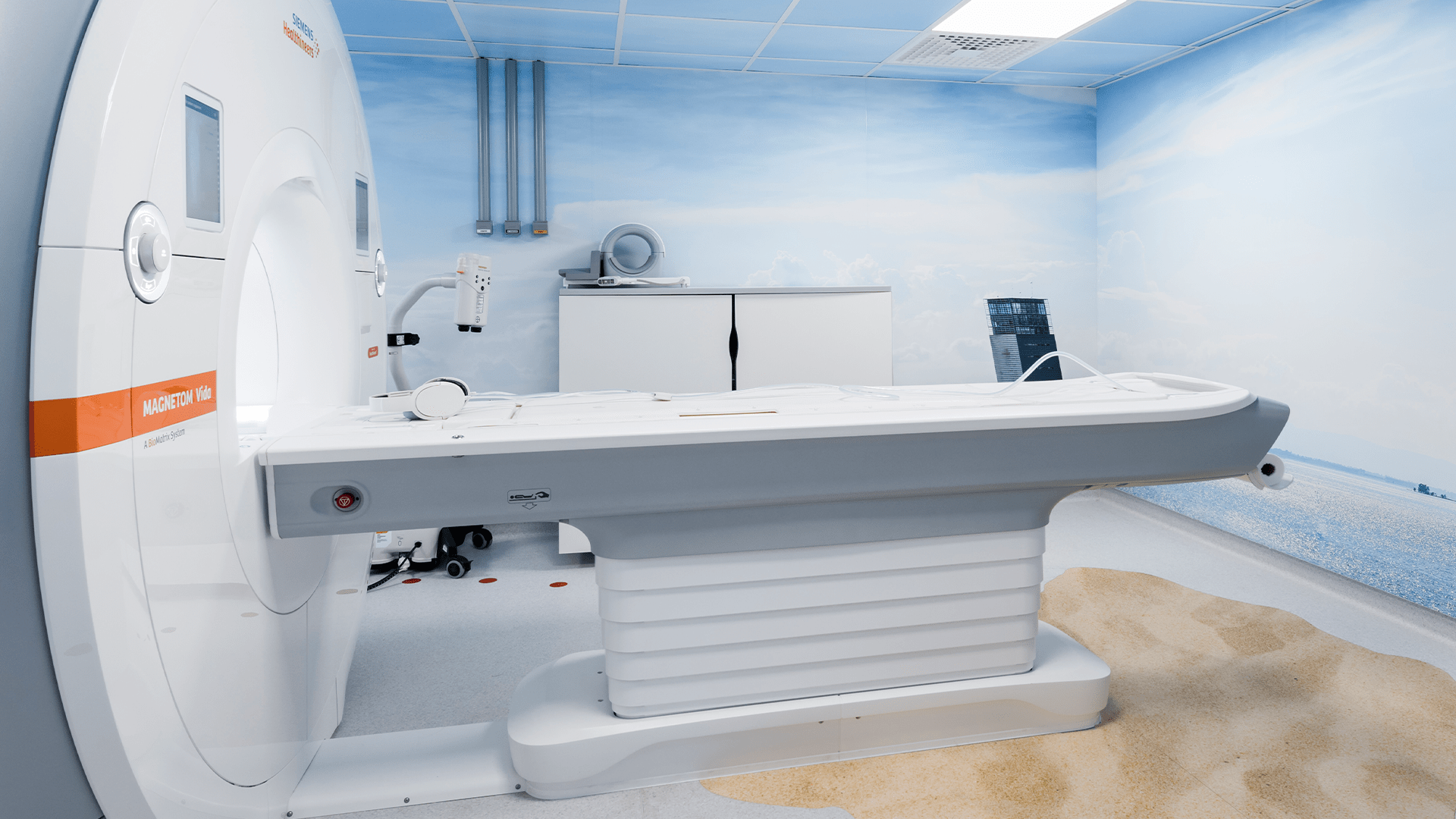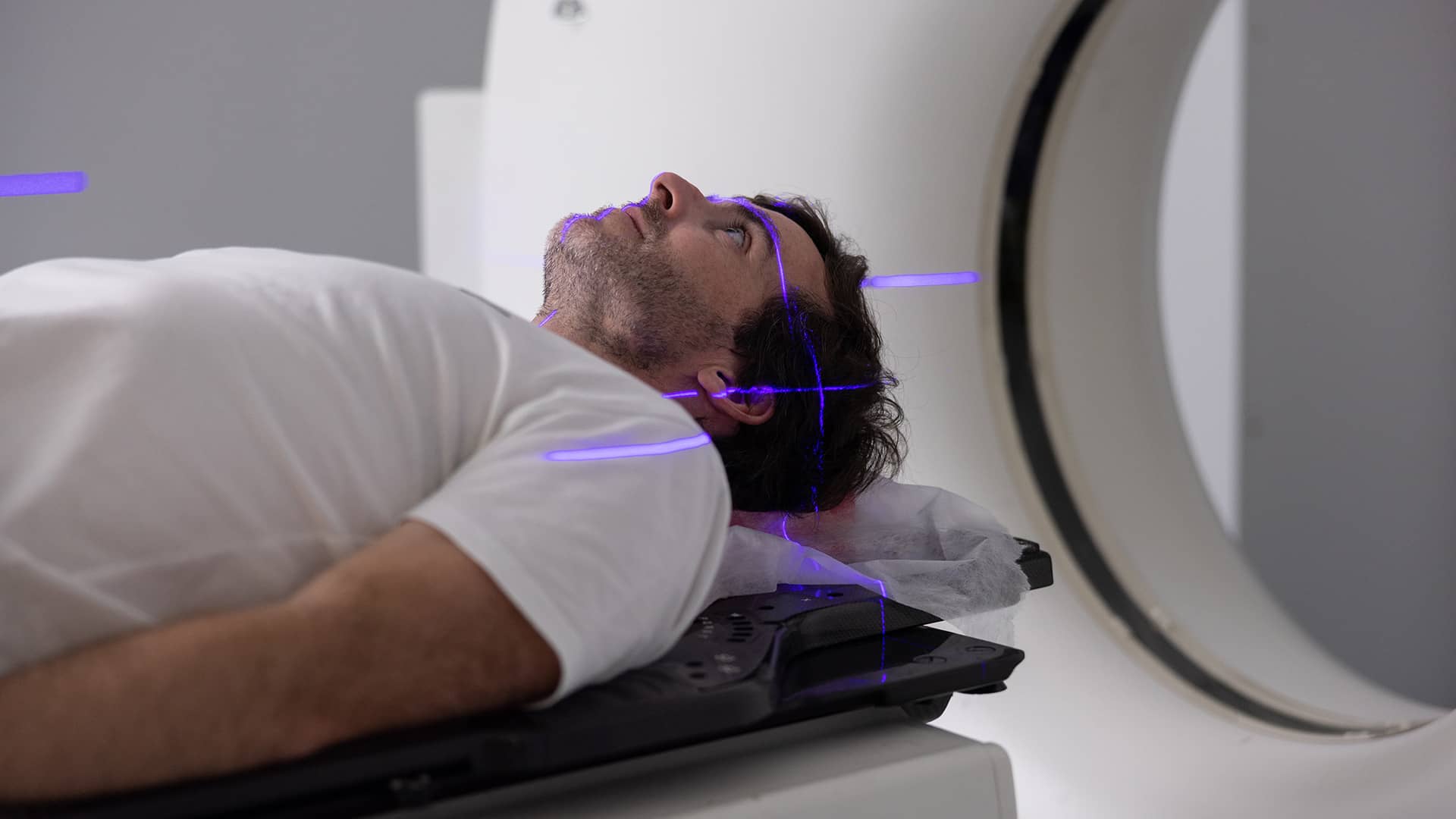MRI is one of the most precise Imaging examinations, which enables the diagnosis of various pathologies – from tumours to orthopaedic injuries. Find out how it works, precautions and preparations, and when it should not be performed.
What is Magnetic Resonance Imaging?
MRI is an examination that allows high-definition visualisation of the human body’s internal organs and superficial muscles, ligaments and tendons. Images are created on three planes: horizontal (sagittal), vertical (axial) and front to back (coronal). Therefore, MRI enables a more precise medical diagnosis, as it presents the body’s organs and tissues in great detail.
Unlike X-ray or computerised axial tomography (CAT scan), MRI does not emit any ionising radiation, using only electromagnetic fields to obtain images of the human body. Thus, this exam is safe and non-invasive.
When it is necessary to highlight certain structures of the body in the image, MRI can be performed with oral or intravenous contrast material. Unlike the contrast media used in CAT scans, MRI contrast does not cause any type of sensation or reaction. The contrast material administered is subsequently eliminated through the urine.
MRI Examination: When is it recommended?
MRI is an essential examination to confirm the diagnosis of various diseases, as well as to monitor the progress of a certain condition. These are the most common cases:
• Detect vascular diseases;
• Diagnose musculoskeletal disorders;
• Urological (kidneys, bladder and prostate) and gynaecological (uterus, ovaries) evaluation;
• Foetal examinations, as of 22 weeks of pregnancy, to detect anomalies;
• Study oncological diseases in different organs.
What happens during an MRI exam?
During the MRI, images are obtained of the affected areas of the body. The machine makes loud sounds while capturing the images, but this is normal and the patient does not feel anything. Headphones are provided to reduce discomfort and, at Joaquim Chaves Saúde, patients can even choose the type of music they prefer.
Throughout the entire examination, the patient must remain completely still, as body movements interfere with the MRI. Some patients feel anxious about spending some time in a cramped space; if this is your case, warn your physician before scheduling the appointment. Nevertheless, the patient is given a call button to press in case of discomfort, and the Radiologist is vigilant and in constant contact with the patient during the whole exam.
What preparation is required for the MRI?
For the examination, the patient should bring the medical prescription, previous diagnostic examinations and the latest tests. Because the exam creates a strong magnetic field inside the body, before entering the MRI room the patient should remove all metallic items to prevent them from being pulled by the magnetic force, such as prostheses, glasses, earrings, rings, hairclips, or other objects. Patients should also leave all clothing in the changing room and wear only the gown provided.
Some devices may be contraindicated for an MRI, such as cardiac pacemaker, cardiac defibrillator, aneurism clips, cochlear implants, insulin pumps, surgical staples and tattoos, among others. Therefore, it is crucial that patients inform the physician if they have this type of device.
Patients must have fasted for at least 6 hours (in some cases, only 4 hours of fasting are required), but may drink water if they need to take their regular medication. Furthermore, it is important to use the bathroom immediately before the MRI, to avoid interrupting the exam. At Joaquim Chaves Saúde, patients are informed of the necessary preparation, depending on the type of examination.
What are the restrictions of an MRI?
Some restrictions apply to MRI. Firstly, this exam can be challenging for patients who suffer from claustrophobia, as they must remain still for some time in a cramped space. In this case, the physician may prescribe light sedation to overcome the situation. When the necessary immobility is not achieved (for example, with infants and children), anaesthesia may be required.
In addition, pregnant women should only undergo MRI after the 12th week of pregnancy, and breastfeeding mothers should not undergo this exam with contrast material. To summarise, MRI is a harmless, painless, non-invasive examination, which enables a highly detailed analysis of the inside of the human body. It is extremely efficient to diagnose some of the most serious diseases and guide the course of therapy, on a case-by cases basis.






